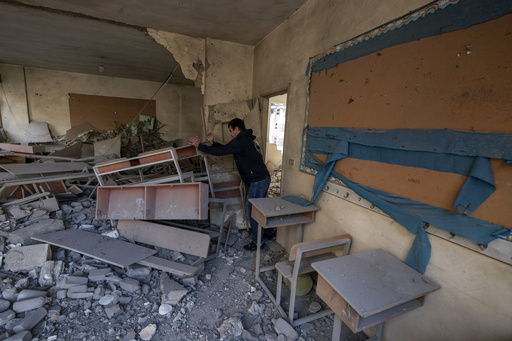
Tensions Resurge as Israel Strikes Hezbollah Smuggling Sites
In a significant escalation, Israeli military aircraft targeted Hezbollah’s weapons smuggling locations near the Syrian border on Saturday. This offensive has raised serious concerns regarding a recent ceasefire, put in place only days before, which aimed to quell months of hostilities between the two parties. Despite the ceasefire, reports of intermittent crossfire continue to arise.
The Israeli Defense Forces declared that the airstrikes were aimed at sites allegedly being used for smuggling arms from Syria to Lebanon after the ceasefire had been established. According to military officials, such activities constitute a breach of the truce’s terms. At present, there has been no immediate response from Syrian officials nor from organizations tracking the conflict within Syria. Similarly, Hezbollah has not provided any comments regarding these events.
This most recent airstrike is part of a series of military actions initiated by Israel since the truce took effect on Wednesday. The renewed tensions also coincide with escalating unrest elsewhere in the Middle East, notably as Syrian rebel forces launched a surprising offensive in Aleppo, adding to the uncertainty in a region already strained by ongoing conflicts.
The truce was negotiated by the United States and France, and it mandates an initial two-month ceasefire. During this period, Hezbollah is expected to withdraw north of the Litani River in Lebanon, while Israeli troops are to return to their respective border. The resurgence of violence—though not reported to have caused significant casualties—highlights the fragile nature of the ceasefire. Both Israel and Lebanon have exchanged accusations of violating the ceasefire agreement shortly after it was enacted.
In the wake of the conflict, many displaced Lebanese individuals, estimated at around 1.2 million, have begun returning to their homes, despite warnings from both the Israeli and Lebanese military to exercise caution in certain areas. Reports from Lebanon’s National News Agency indicated an Israeli drone strike on a vehicle in the southern village of Majdal Zoun, resulting in some casualties, although details remain scarce. This village is situated near the Mediterranean coast and close to zones where Israeli forces maintain a presence.
Earlier that day, the Israeli military stated its intentions to mitigate threats from “suspects” within the southern Lebanon region. They also disclosed that troops had located a cache of weapons hidden in a mosque. Israel claims its right to conduct military strikes under the terms of the ceasefire if violations are perceived. The overarching strategy of the Israeli operations appears focused on enabling the return of displaced citizens while still addressing concerns regarding potential Hezbollah attacks in northern communities.
The onset of hostilities can be traced back to October 8, 2023, when Hezbollah initiated attacks on Israel in support of Hamas, which had targeted southern Israel the day prior. The two entities had engaged in persistent cross-border skirmishes for nearly a year until Israel intensified its military response with a sophisticated offensive targeting Hezbollah communications. Following this, a rigorous aerial bombardment campaign decimated many Hezbollah assets and resulted in the deaths of numerous high-ranking leaders, including longstanding chief Hassan Nasrallah. The escalated conflict also saw ground operations commencing in early October.
According to health officials in Lebanon, the ongoing conflict has now claimed over 3,760 lives in Lebanon due to Israeli fire, with many of the casualties being civilians. Conversely, more than 70 Israeli deaths have been reported, with over half being civilians, along with numerous Israeli military personnel involved in the operations in southern Lebanon.
